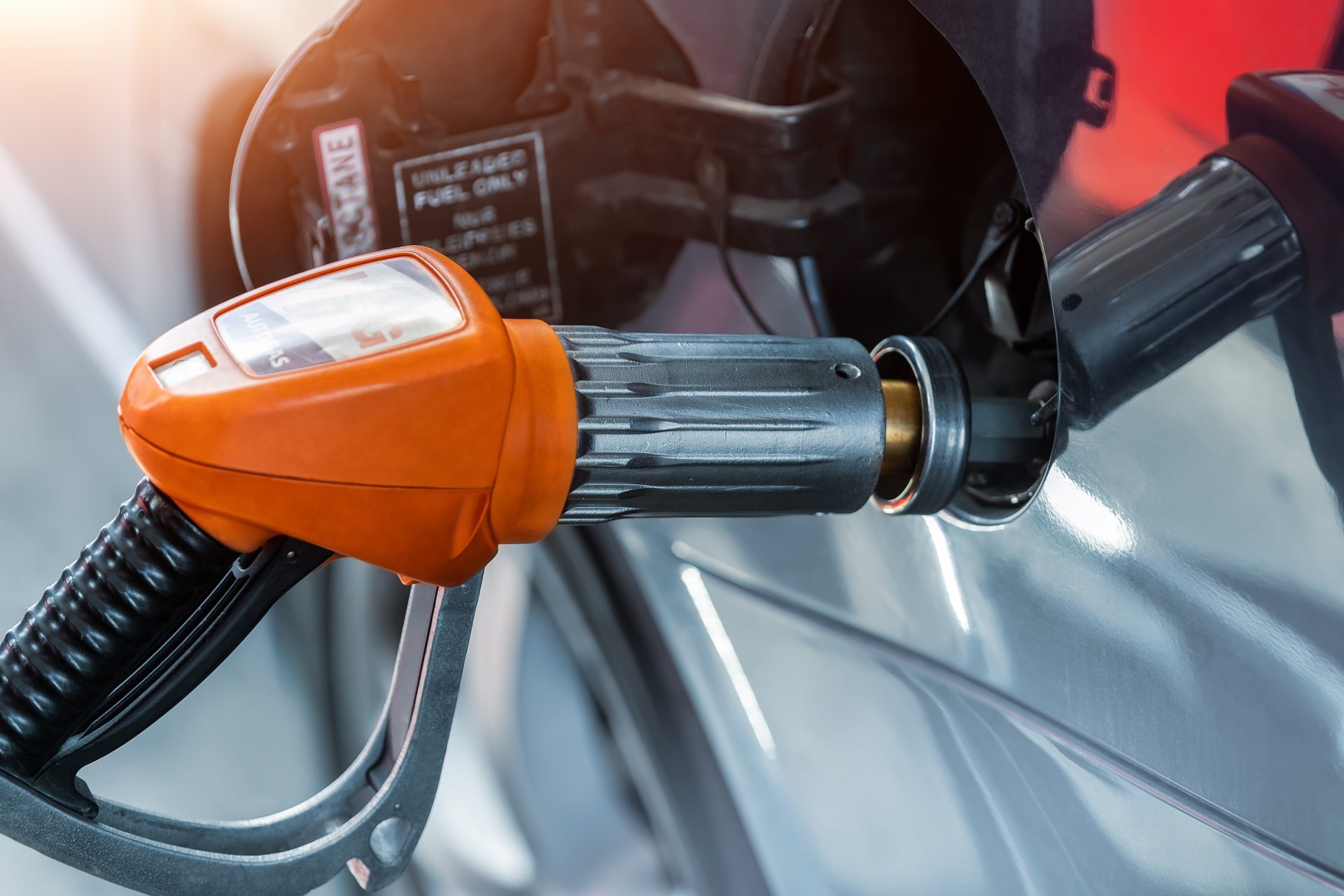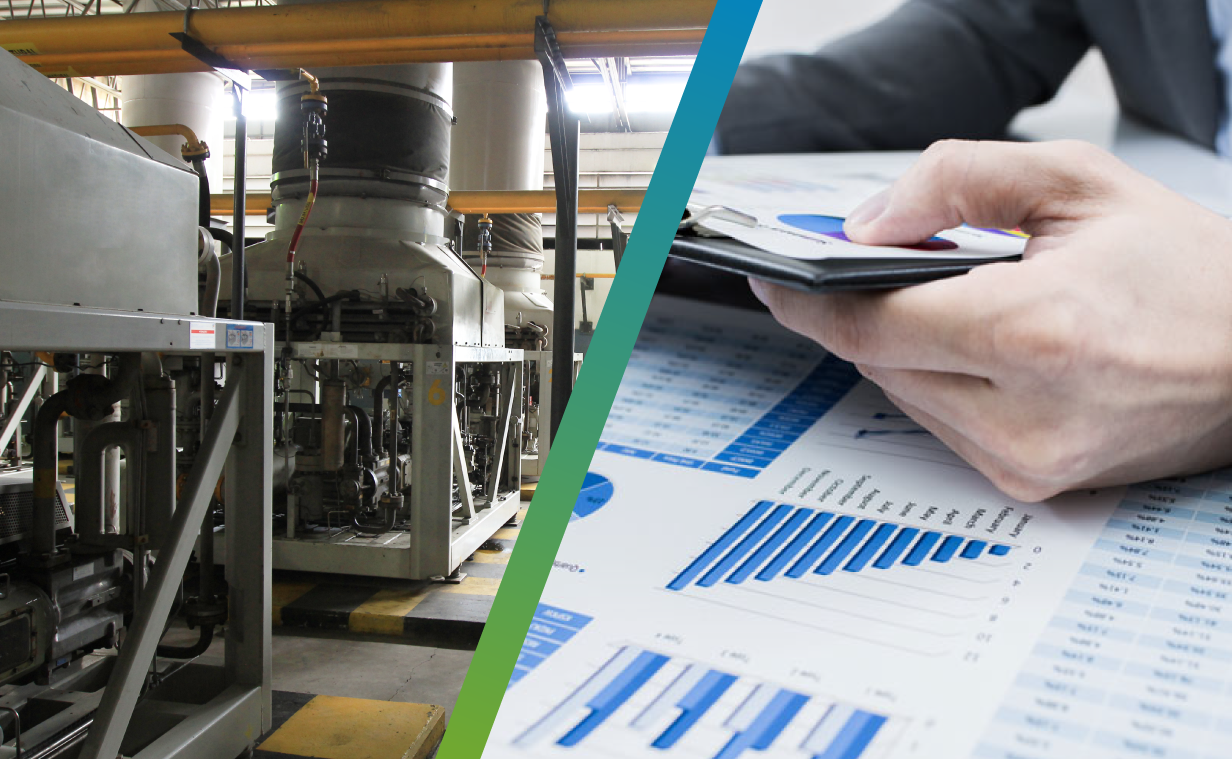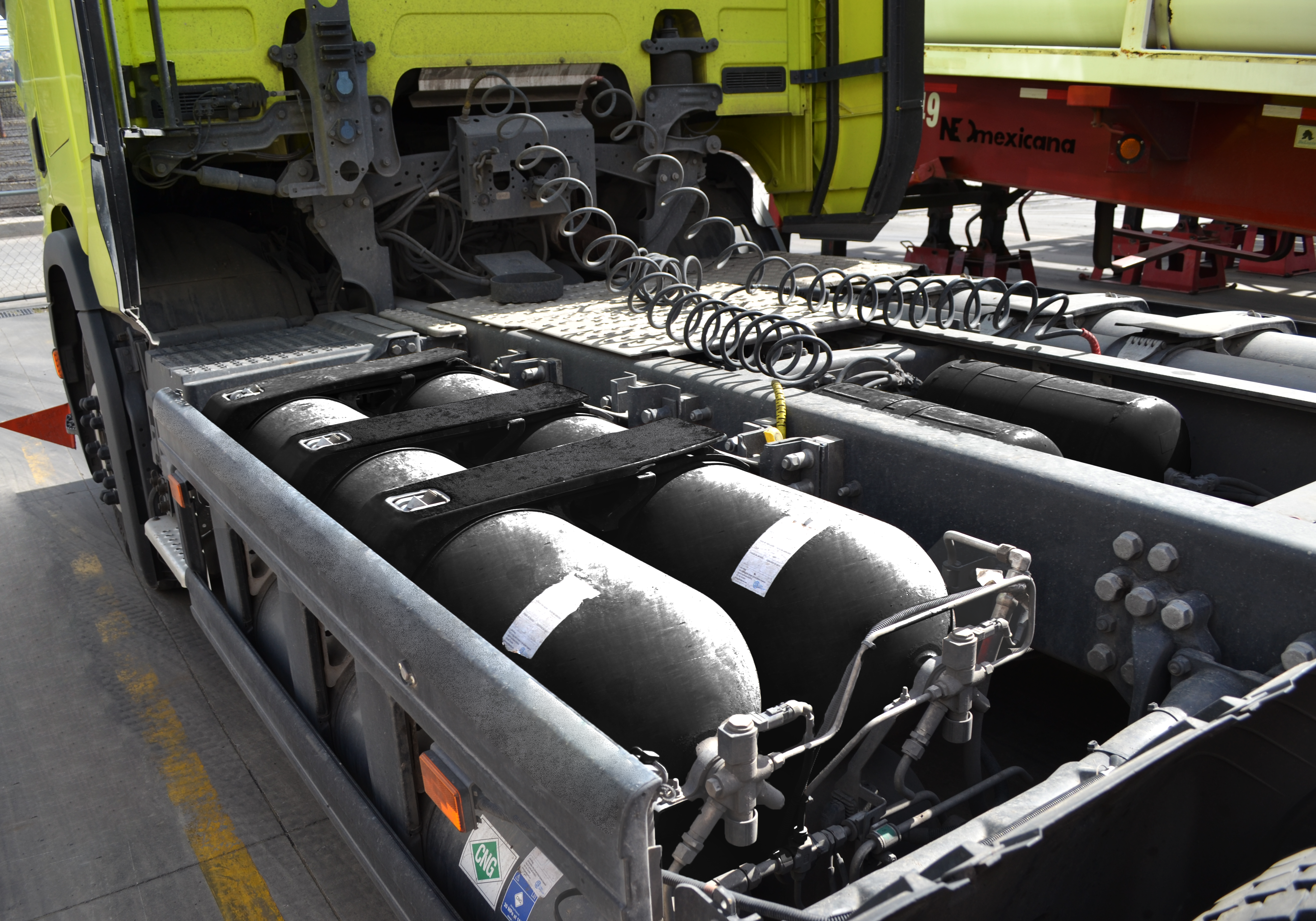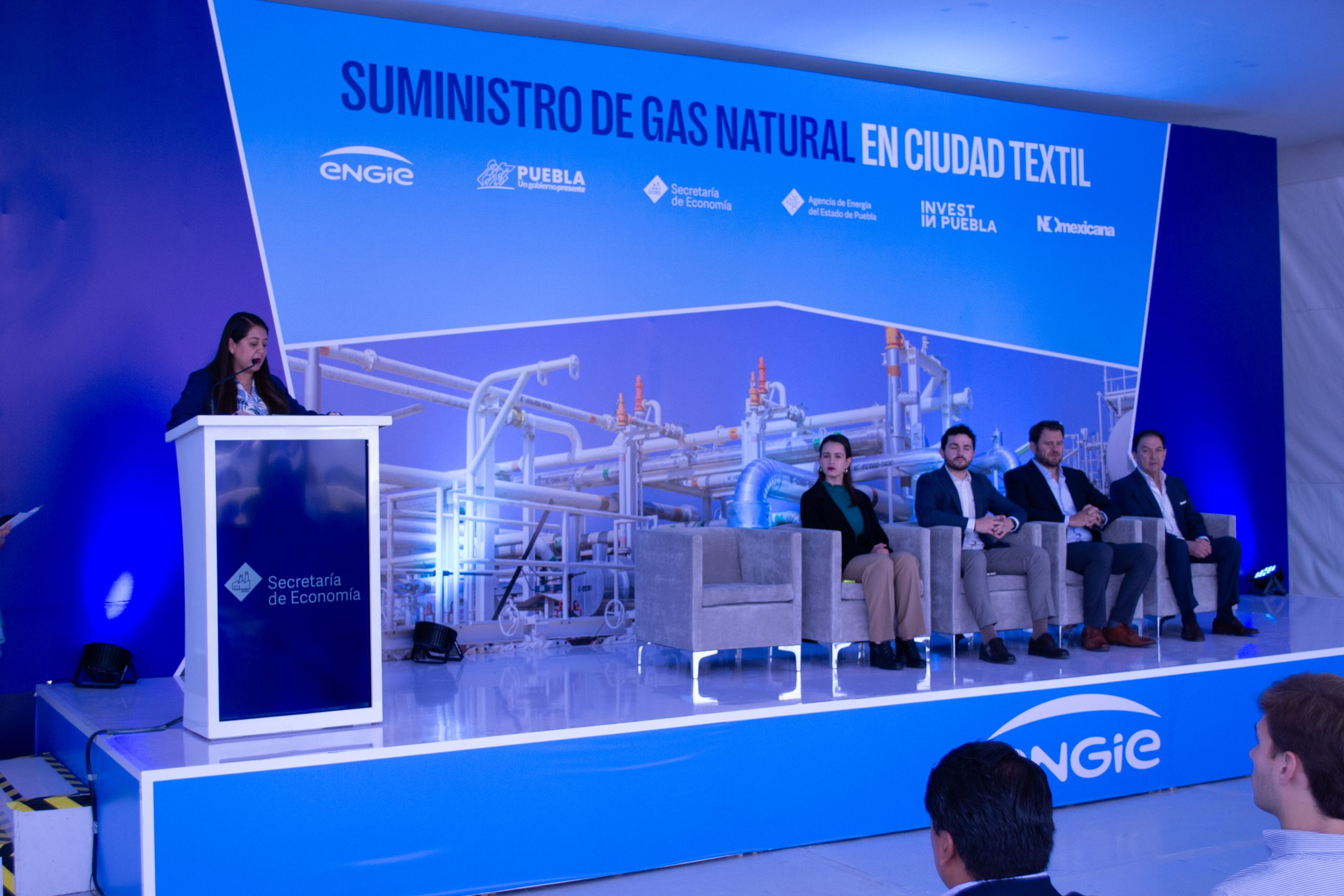NATURAL GAS DRIVES MEXICO’S TRANSITION AND PROVIDES OPPORTUNITY
Q: How have your operations in the sector evolved as natural gas becomes a key fuel in Mexico’s energy transition?
A:Our natural gas operations have been growing steadily each year, reaching new geographic areas where we deliver natural gas in different modalitie. Our natural gas distribution network has been operating for 95 years in Monterrey, where we serve the residential, commercial and industrial markets. Our virtual pipelines allow us to reach areas outside our distribution network, within a radius of 200km. We also have a trading company that imports gas from the United States. The open market gives us access to different distribution and transportation systems so that we can sell in different regions of the country.
Q: What opportunities and challenges do you see in the development of natural gas infrastructure A: Mexico is a suitable center for the natural gas industry. Its access to the cheapest natural gas in the world (from the United States) allows it to offer good prices and high capacity. Even so, we believe that the development of natural gas infrastructure is key to the country’s development. According to INEGI data, the manufacturing GDP of those states with access to natural gas is higher than that of states without sufficient coverage. Natural gas is undoubtedly a lever for development, generating employment and economic benefits. One of the major projects announced by the federal government is the gasification of the southeast of the country, where there are opportunities and challenges.

Southeast Gateway Project
This project has a length of 715km and a transportation capacity of 1.3 billion cubic feet per day, which will transport natural gas from Tuxpan, Veracruz, to Paraíso, Tabasco. The pipeline will supply natural gas to industrial plants and parks, boosting industrial development in the southeast, detonating the regional economy and generating direct and indirect jobs. Even so, the network does not reach the south-southeastern states, which have little or no access to fuel. This limits its potential to attract investment in high value-added industries.
Tuxpan-Tula Pipeline
The offshore pipeline starts in Brownsville and ends in Tuxpan. The construction of one of the most important pipelines of the Tuxpan-Tula plan has been paralyzed since 2018 due to social problems, even though it has only a few kilometers left to be built. Its completion would allow the Tula thermoelectric plant to be converted to natural gas, thus reducing polluting emissions that affect the Valley of Mexico.
Q: How has digitalization helped the monitoring of distribution operations?
A: The company is investing heavily in the modernization of its processes as well as in information security, where we are implementing various actions to protect data from cyberattacks. We are increasingly using virtual servers in the cloud, with a much lower risk of data loss. New communication technologies are being applied in the operating processes that allow us to remotely operate the opening and closing of valves and regulators, monitor pressure and temperature conditions, cathodic protection and chromatography. Regarding virtual pipeline activities, technology allows us to visualize in real time the location of each gas transportation unit, as well as the gas inventory of each customer. In the residential sector, the company is investing in new technologies to bring customers closer and give them access to information. Through their phone, customers can pay their bills, request account information and review their consumption history and payment methods, among other options. Our talent is also being affected by digitalization. Our organization always seeks to develop and train our staff not only with soft skills but also with new technologies, which are constantly updated to continue adding new value to the company.
Q: How do you help your clients improve their environmental performance in the natural gas sector?
A: We have the opportunity to talk to our clients, learn about their processes and explain the advantages of switching to natural gas. One of our main functions is to convert processes so that companies stop using environmentally unfriendly fuels. We also help convert truck fleets from diesel to natural gas, which is a better option for the environment.
When we talk to our customers, we not only talk about the environmental benefits but also the economic gains they can achieve.
Q: How are you increasing your customer base in the residential and industrial sectors?
A: In Monterrey we have a customer base of 195,000, which in a few months will increase to 200,000. Diavaz has an investment plan to grow our network. We are growing approximately 150 km per year, which allows us to reach new neighborhoods. We pay special attention to new constructions in order to incorporate them into our gas networks from the very beginning. In the case of virtual pipelines, investments are being made to continue capturing customers in a 200-kilometer radius around our compression bases in Puebla and Jalisco. As for our commercial strategies, we have sales teams in different parts of the country working to attract more customers. We see opportunities, especially considering that Monterrey is the most gasified area in the country and around 95% of families use it, well above other cities. We are exploring other regions to develop distribution systems. In the industrial sector we have a commercial team that visits companies and analyzes their processes to make them an offer explaining the benefits of natural gas.
Q: What is Mexico’s acceptance of natural gas?
A: There is still little penetration of natural gas in Mexico. The distribution systems operating in the country serve 2.8 million domestic customers with a penetration of 7%, below LP gas with 79% and firewood with 11%. To cite some examples in the Americas, Canada and the United States stand out with more than 50% coverage. In Europe, England, France and Italy record 70% natural gas consumption among households. The objective should be for regulatory agencies and the three branches of government to have greater coordination and better schemes to encourage greater investment and certainty over time. It is necessary to massify the use of natural gas throughout the country.
Therefore, it is necessary to update the rules for determining rates, streamlining and making more efficient the rate review processes, while guaranteeing healthy competition and regulatory symmetry for different fuels.
Q: What areas of opportunity do you see in the development of natural gas in the country?
A: To reduce our dependence on the United States, it is necessary to boost investment in exploration and production. The country has ample potential to exploit its natural gas reserves; however, this requires public and private investment. Mexico cannot depend solely on PEMEX for natural gas production. Therefore, greater mechanisms are required to allow the exploration and exploitation of natural gas fields by private operators who assume the financial and operational risk at no cost to public finances. In terms of transportation, the system is not interconnected, as it consists of two almost independent systems: Sistrangas operated by CENAGAS and the system tendered by CFE. This reduces the flexibility of the system and puts the country’s energy security at risk. We need an integrated system with clear rules for the administrator, the system operator and the end user. The CRE recently published new General Administrative Provisions (DACG) that may be a solution to attract investments in pipeline transportation services. The country is becoming the preferred destination for new companies that take advantage of the nearshoring trend and these companies require water, electricity and gas for their processes. As for natural gas vehicles (NGVs), their penetration is less than 1% of the country’s vehicle fleet. Compared to other countries such as Argentina, Brazil and Colombia, the percentage of gas-powered cars in the total vehicle fleet in each country is around 21%, 10% and 7%, respectively. To advance the adoption of natural gas in this sector requires a greater number of stations, more agility in permits and strong government support based on a public policy that prioritizes the use of cleaner and more economical fuels. Finally, our country has neither strategic nor operational storage, according to the public storage policy that was published in 2018. This contemplates that by 2026 we must have strategic storage equivalent to five days of demand. Current storage is 2.5 days, mainly at the Altamira, Manzanillo and Ensenada regasification plants. This condition leaves us exposed to energy security risks derived from the imbalance between supply and demand.
Q: How does Diavaz balance its focus on creating value for customers with its commitment to environmental protection and safety standards?
A: We seek to provide a value proposition that benefits customers, always taking into account safety protocols. safety and quality necessary to avoid incidents of any kind and unforeseen events We take care of our emissions as they contain methane. We have CEA ASEA regulations and internal controls that help us keep emissions low and protect the environment. In addition, we care for the communities that are close to us.
The company has assistance programs with local authorities to empower these communities.
Q: What were the company’s biggest achievements in 2022?
A: Our most important achievement has been growth. We welcome around 13,000 to 14,000 customers per year in Monterrey. Our commercial segment is present not only in Monterrey but also in the rest of Nuevo León, Tamaulipas and the state of Coahuila. Center and west of the country as well. We have also made great progress in convincing companies, especially trucking companies, to switch from diesel to natural gas. In addition, Diavaz is reaching out to more industries, such as automotive manufacturing, food, pharmaceuticals and others, using virtual pipelines. Operational safety and environmental protection have been one of our top priorities.
DIAVAZ is a 100% Mexican-owned holding and holding company. It provides specialized services through its 4 divisions: DIAVAZ Oil Services, DIAVAZ Midstream, DEP Oil & Gas and Gas and Power.
Source: Mexicobusiness Ricardo Ortiz Diavaz Gas and Energy Director






